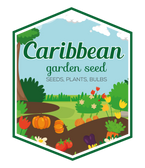
Kentucky Wonder 125 Bush beans
FAST & FREE SHIPPING
Over 90% of our orders are processed and ship out by next business day.
We are currently processing and shipping most orders within 1-3 business days. (backorders not included) Due to high demand during the peak months of January to May, orders may require additional time for packaging /shipment.
Free shipping for orders over $54.95. Excludes live plants, fresh products And Stackable Black Plastic Nursery Crate
Shipping and handling charges will cover outbound freight and packaging materials. Fees are applicable to all orders, based on total order value pre-tax. Expedited services can be selected at Checkout with extra fees.
- Free shipping to lower 48 states on orders $54.95+
- (Most Items), excluding live plants, plant bulbs, and black plastic nursery crate.
- Safe Seed Pledge
- Satisfaction Guaranteed
- Select your desired size and/or color from the available options.
Kentucky Wonder 125 Bush beans , No Staking ! Organically grown.Customer Favorite!
Pods are oval, thick, gently curved, meaty and tender. Stringless when young
Kentucky Wonder 125 Bush Bean - Matures a week earlier than most bush beans (45 days) and produces beans in clusters over an extended season. The bush beans’ meaty, medium-green pods are packed with delicious, extra-tasty bean seeds. Grows on an upright 20” tall bush. Excellent either canned or frozen.
Bush green bean with medium-green, flattened, 4- to 6-inch pods with white seeds. Resistant to common bean mosaic and northern leaf blight.
Wait until the frost-free date for your zone AND until the soil has warmed to above 60F (15C).
Plant seed one inch (2 cm) deep (as deep as the bean is long), in rows 18 (45 cm) to 36 (90 cm) inches apart.
Plant directly in the garden, and don't start indoors since they don't transplant well. Soaking beans is not necessary and, in fact may damage seeds..
Plant successively through July, but in the height of summer pod, when temperatures are above 90F (32C), pod set weakens.
Keep evenly moist (about 1 inch or 2 cm / week, like a lawn) especially when plant is in bloom and developing pods. Deformed pods may be the result of insufficient moisture, poor soil fertility or insect damage during bloom. Drip irrigation is best, since wet foliage promotes disease. As with most vegetables, water early in the day so any moisture on foliage dries quickly. Do not use nitrogen fertilizers since you will get excessive leaf production instead of fruit. Best practice is to rotate crop position in the garden every three years.
Pods are oval, thick, gently curved, meaty and tender. Stringless when young
Kentucky Wonder 125 Bush Bean - Matures a week earlier than most bush beans (45 days) and produces beans in clusters over an extended season. The bush beans’ meaty, medium-green pods are packed with delicious, extra-tasty bean seeds. Grows on an upright 20” tall bush. Excellent either canned or frozen.
Bush green bean with medium-green, flattened, 4- to 6-inch pods with white seeds. Resistant to common bean mosaic and northern leaf blight.
Wait until the frost-free date for your zone AND until the soil has warmed to above 60F (15C).
Plant seed one inch (2 cm) deep (as deep as the bean is long), in rows 18 (45 cm) to 36 (90 cm) inches apart.
Plant directly in the garden, and don't start indoors since they don't transplant well. Soaking beans is not necessary and, in fact may damage seeds..
Plant successively through July, but in the height of summer pod, when temperatures are above 90F (32C), pod set weakens.
Keep evenly moist (about 1 inch or 2 cm / week, like a lawn) especially when plant is in bloom and developing pods. Deformed pods may be the result of insufficient moisture, poor soil fertility or insect damage during bloom. Drip irrigation is best, since wet foliage promotes disease. As with most vegetables, water early in the day so any moisture on foliage dries quickly. Do not use nitrogen fertilizers since you will get excessive leaf production instead of fruit. Best practice is to rotate crop position in the garden every three years.
HOW TO GROW GUIDE
LET OUR CUSTOMER SPEAK FOR US

![[Seeds] - Caribbeangardenseed](http://caribbeangardenseed.com/cdn/shop/files/gift-card-gift-card-1_1024x1024_dfa857db-9150-4315-a362-7f0bb3fb9c47_60x28.png?v=1722895789)






